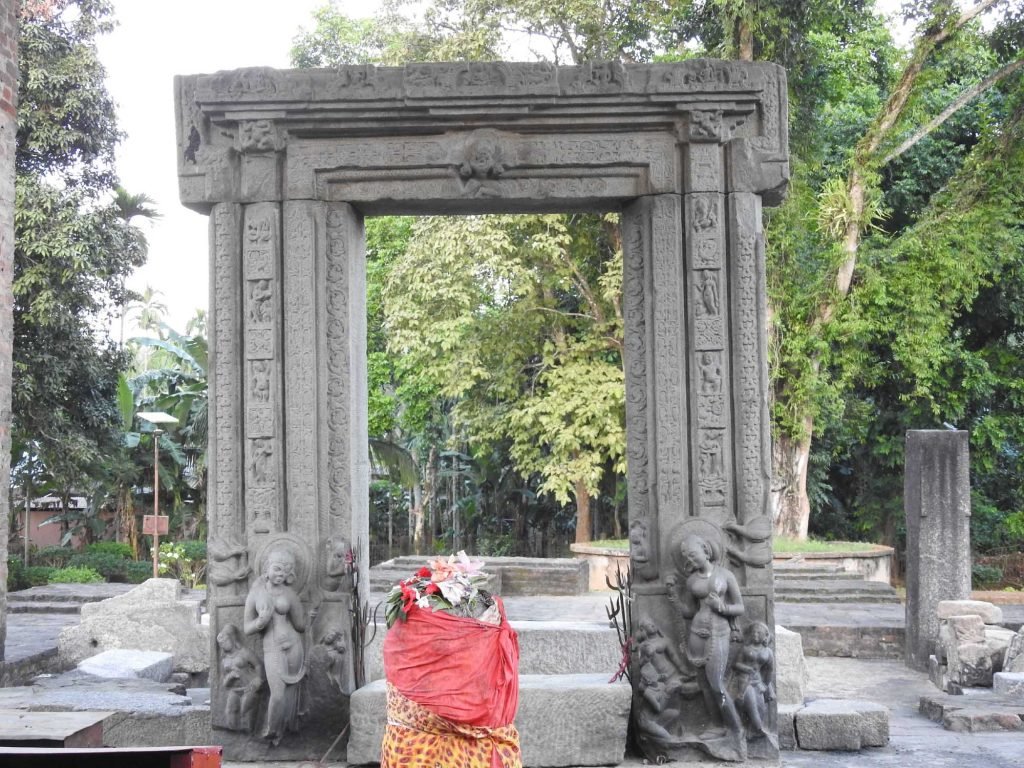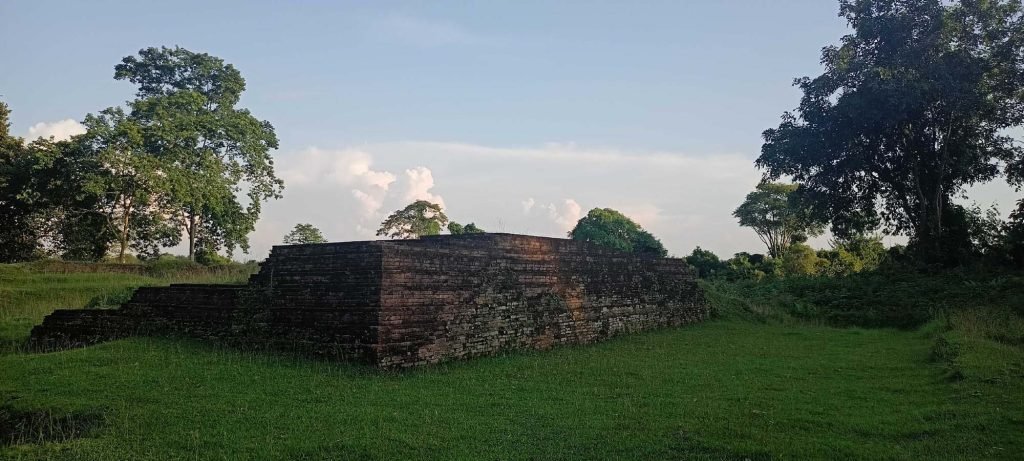Tezpur, steeped in the Puranic love story of Usha (the daughter of Banasura, a mighty Shiva Bhakt) and Aniruddha (Lord Krishna’s grandson) is a treasure trove for archaeology enthusiasts. Seven km from this City of Eternal Romance lies Garh Doul, a site that dates back to the Salastambha period in 7th century CE. Marked by two brick mounds—said to contain remains of two temples (douls)—and a brick-reinforced rampart or garh, some believe it to be the place where Usha and Aniruddha were tied together in holy matrimony.


In present-day Tezpur, a park atop a hillock on the banks of the Brahmaputra is Agnigarh. Mythology says, Usha was imprisoned by her father Banasura here. Now known as ‘Usha-Aniruddha Udyan’, one can take in the massive spread of the mighty river, with forests on one side and an equally green Tezpur on the other. And, along the circular stairway that leads to the top, one finds sculptures that portray a story of love and war, that of, Usha-Aniruddha’s.
In Tezpur itself are Da-Parbatia and Bamuni Hills, famed for their ruins. The site of the magnificent door frame of Da-Parbatia temple, which may be placed around 5th-6th century CE, show a close affinity with the art traditions of Gupta school of sculpture with images of river goddesses – Ganga and Yamuna, leaves one spellbound as do the stone carvings on the Bamuni hillside. Believed to belong to 9th-10th century CE, the carvings and a cross-shaped bracket lintel decorated with kirtimukha panels comprising of ten incarnations of Lord Vishnu, present a majestic sight.


Tezpur is dotted with Shaiva temples of which Mahabhairav is the one with historicity. While the present structure is a modern one, the original temple, according to Puranas, was built by King Banasura himself. The king is said to have been the first person to worship the linga form of Shiva (albeit, according to archaeological evidence, the temple was built between 8th-10th century CE).
Assam is a land of antiquity, and with several dynasties having ruled at different periods, their legacies are often found in ancient remains. The Garh Doul excavations have led to amazing discoveries and many archaeological attractions in Assam are changing into tourism products through storytelling and storyboards. Bridging the past and present, Archaeological or Archaeo Tourism is waiting to be experienced !
